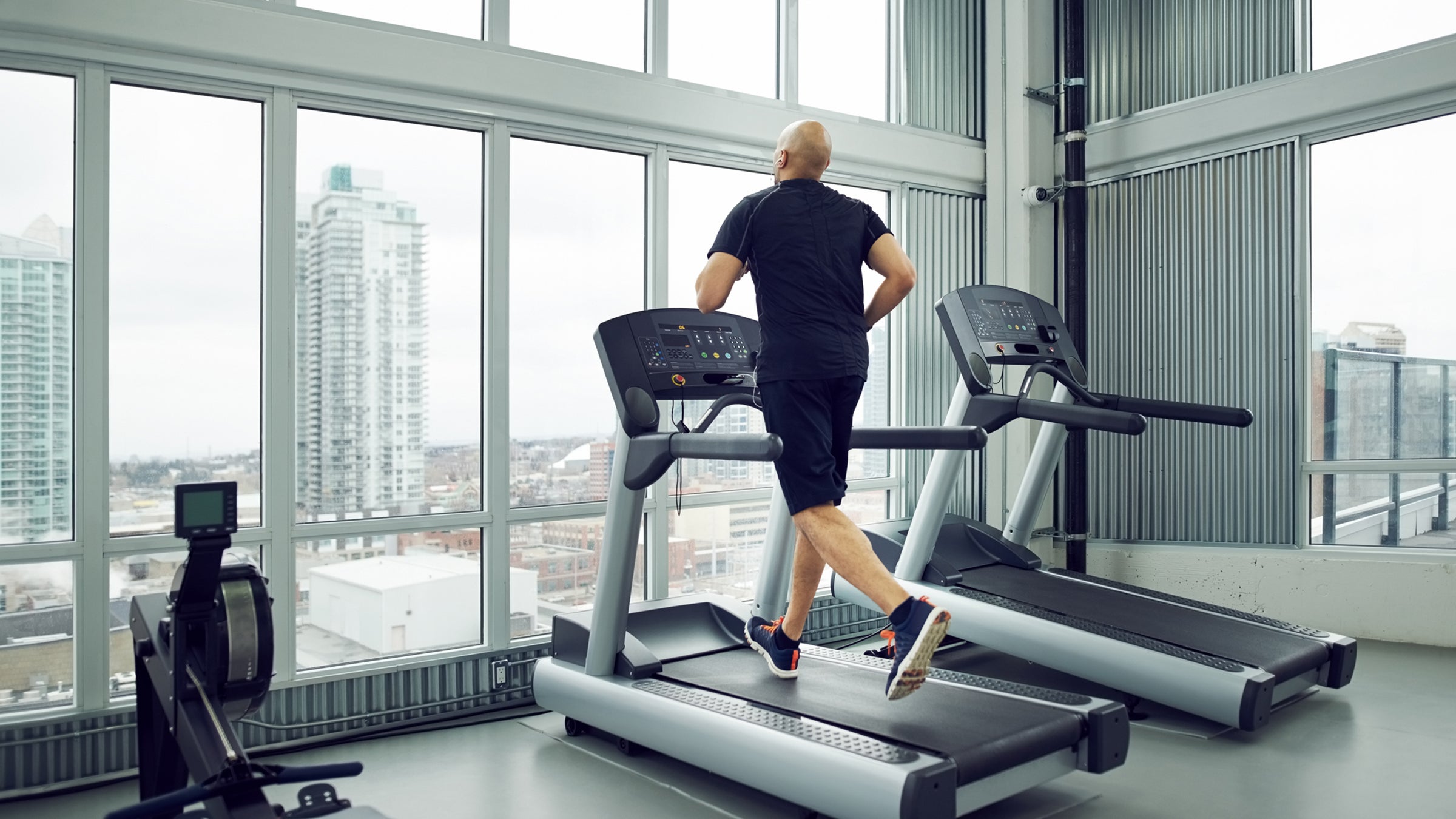Question:
I’ve recently switched from outdoor running to treadmill training. Are there injury risks associated with this change? – Jean
Short Answer:
There’s an injury risk with any type of running, and some risks specific to treadmills — but you can reduce your treadmill risk by following a few simple guidelines.
Long answer:
First, the scary news: A review of workout-related emergency room visits, conducted by elliptical reviews.com, concluded that treadmill running was the most dangerous indoor exercise, accounting for over a third of all injuries and trouncing activities such as weight-lifting, yoga, jump rope, and box jumping. Yes, even box jumping!
But here’s the (sort of) good news: Outdoor running is equally dangerous. Between 50 and 80 percent of outdoor runners get injured each year. In the U.S. alone, that’s more than a million cases each of shin splints, Achilles tendinosis, IT band syndrome, and plantar fasciitis — and twice that many instances of runner’s knee.
As Mike Parkinson, a Los Angeles-area physical therapist, high school track coach, and former UCLA track star puts it: “You can get injured running anywhere, anyway.”
That includes on the treadmill. And yes, there are some unique injury risks associated with treadmill training. But nothing that a little practice and common sense can’t overcome.
The most obvious challenge is balance. “It’s different on a treadmill,” says Parkinson. “Your proprioception [a primary component of balance] is thrown off because you expect to see the scenery going by you. Those visual cues are an important part of the normal input that guides your cyclical leg movements.”
Parkinson notes that if you run on a treadmill and turn your head to the left, you’ll lose your balance to the right. Look to the right, and you lose balance to the left.
“I had a patient who lost her balance on the treadmill, fell off the back, and broke her shoulder,” says Parkinson. “In fact, that’s how several patients have come to me — falling off the back.”
So your first step in transitioning to the treadmill is to practice balance — gradually. Be aware that it’s a factor. Reduce head movement (e.g., sideways glances) for the first few sessions. And be confident that you’ll soon adapt to the change.
Of course, falling off the back isn’t the only way to get hurt on a treadmill. I personally suffered a nasty hamstring strain putting in treadmill miles while vacationing at Disney World. And a 2016 study documented greater loading rates and peak forces for participants’ Achilles tendons during treadmill versus overground running, potentially increasing the risk for Achilles injuries.

But Parkinson suggests the main factor driving treadmill injuries isn’t load rate, peak force, or Disney World vacations. He places the blame on that old human standby: our egos. We choose a speed for the treadmill, we run until we get tired, and then we refuse to push the “slow down” button until it’s too late.
And that’s a problem because as we fatigue, our form falters, our balance becomes less stable (see above for “falling off the back”), and we change our stride — specifically, we overstride — to keep pace with the treadmill. When we overstride, we reach forward a little bit more with each step, landing farther back on our heels with straighter knees, a recipe for runner’s knee, hip-flexor strain, hammy pulls, and more.
Luckily for us, Parkinson has a simple solution: “Push the button.”
So your second step in transitioning to the treadmill is to set your ego aside and be willing to adjust the treadmill speed. When you get tired on the road or trail, you slow down until you catch your breath. Do the same on the treadmill.
Finally, I’d like to offer a personal observation based on years of coaching athletes who utilized treadmills: Don’t forget to warm up. Don’t jump straight from standing in your living room to chugging away at your normal distance-running pace on the treadmill. You still need 10-12 minutes of easy (i.e., slower) running to prepare your body for the faster running to follow.
That said, save the pre-workout strides and drills for outdoors (or a long hallway indoors). “Strides are not a good idea on a treadmill,” says Parkinson. “That leads straight into the falling off.”
So here are your three guidelines for safe treadmill running:
- Practice balance (use the handrails if necessary).
- Push the button to reduce speed when you’re fatigued.
- Warm up.
Treadmill running isn’t a perfect substitute for outdoor running. It doesn’t replicate the terrain adjustments, lateral movements, force production variations, etc. that play into every outdoor run. But when severe weather, pandemics, or other circumstances require you to turn to the treadmill, you can rest easy. Treadmill running is a safe, effective workout — just resist the urge to look over your shoulder to see who’s got next, unless you’re looking for a quick exit off the back and on your face.
Have a question? Shoot us a note.
—
Pete Magill is a running coach, world-class runner, and author. As a coach, Magill has led his masters clubs to 19 USATF National Masters Championships in cross country and road racing and has worked with athletes of all ages and abilities. He holds multiple American and world age-group records and is a 5-time USA Masters Cross Country Runner of the Year. Magill is author of Fast 5K, SpeedRunner, Build Your Running Body, and The Born Again Runner.


